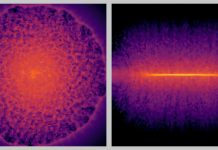
When you hear about a video game with over 1,000 planets to explore, you might think, “Wow, that’s huge! But how did they make it?”
That’s what a lot of fans thought when Todd Howard from Bethesda Game Studios announced their new game “Starfield.”
Set to launch on Xbox Series X/S and PC on September 6, “Starfield” is not just a big game; it’s a whole universe!
So, how did they make it? Bethesda used something called “procedural content generation” or PCG for short.
Chris Martens, a professor who teaches about game design, explains that PCG is like a recipe that a computer follows to create parts of a game.
It can make trees, rocks, and even whole game levels. It’s a tool that Bethesda has used before in popular games like “The Elder Scrolls” and “Fallout.”
Imagine you’re making a sandwich with a list of ingredients. PCG mixes these ingredients differently each time to create new levels.
Sometimes you’ll get a level with more enemies; sometimes, it’s a maze of corridors. PCG mixes it up so that each time you play, you get a unique experience.
Bethesda took this idea of PCG and made it even bigger for “Starfield.” Instead of just levels, they’re making whole planets! Jean-Francois Levesque, who’s leading the technical part of the game, explained that as you approach a planet in the game, PCG starts building it.
Then they add handcrafted details like plants, creatures, or pirate camps to make it unique and tell a story.
But wait, there’s more! Todd Howard says “Starfield” also has a lot of hand-made content. We’re talking about big cities and a lot of dialogues (over 200,000 lines!). This means you’re not just getting random planets; you’re getting a rich experience carefully designed by the game makers.
How do they make the planets look real? Martens suggests that they might be using a noise algorithm. It’s like shaking a jar of marbles and then letting them settle to make the planet’s surface look random but still natural. They might also simulate things like weather and erosion to make the planets look even more real.
Colan Biemer, a student studying game tech, says creating a universe this big isn’t easy. It starts simple, like making a basic shape for a planet. Then they keep adding details like weather, gravity, and life forms. It’s like building a cake layer by layer.
But there’s a catch. Making a universe this big can be tricky. The problem is, when you let a computer make things, they might not always be fun or interesting. Sometimes, they can even look almost the same, which can get boring. This is called the “10,000 Bowls of Oatmeal Problem.” Players don’t want every planet to be like a bowl of oatmeal, just the same thing over and over with minor changes.
Despite these challenges, if done well, PCG can make games super replayable. Each time you play, you might discover something new and exciting. But the big question is, will the game be fun? Will players love exploring this giant universe, or will it feel like a chore? Only time will tell when “Starfield” finally launches.
In summary, Bethesda is using smart tech and lots of handcrafted details to create an exciting new universe in “Starfield.”
It’s a huge project with both big opportunities and challenges. Whether it takes off like a rocket or falls flat will be up to the players to decide. But one thing is for sure: it’s going to be a game like no other.
Follow us on Twitter for more articles about this topic.



